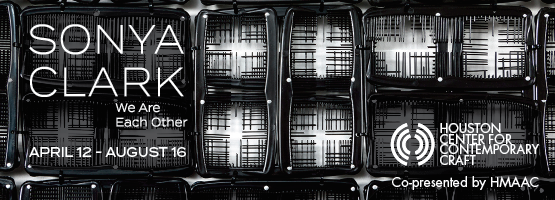Imagine installing seven massive Flemish tapestries, each measuring 14 feet tall and 28 feet wide. The Kimbell Art Museum had to make significant adjustments to its galleries to accommodate these masterpieces, part of Art and War in the Renaissance: The Battle of Pavia Tapestries, which will be on display through Sept. 15.
The tapestries, along with two complete suits of ceremonial armor and a selection of arms from the renowned Farnese Armory, are traveling to the U.S. from the Museo di Capodimonte in Naples, Italy. The tapestries were commissioned to commemorate Holy Roman Emperor Charles V’s decisive victory in 1525 over François I, king of France, which ended the 16th-century Italian wars. With this victory, the emperor gained the Duchy of Milan and the Kingdom of Naples, making the Holy Roman Empire the most powerful political and military entity in Europe.
The Battle of Pavia was over in just four hours, as the French forces were no match for the imperial army and their arquebuses, examples of which are included in the show. The use of these handheld, barrel-loaded firearms was a significant advance, marking the shift from medieval to modern warfare.
“Like in medieval times, the French forces were dressed in armor and carrying pikes, swords, and halberds,” said Price. “Without armor, the imperial forces had greater mobility. They could load their guns, run up close enough to shoot the enemy, and then run back to reload. They picked the French nobility off their horses.”

1 ⁄7
Willem and Jan Dermoyen, after Bernard van Orley, The Incursion of the Imperial Baggage Train into the Battlefield, and the Surrender of the Swiss Pikemen of the French Army, c. 1528–31. Wool, silk, gold, and silver thread, 172 x 347 1/4 in. (437 x 882 cm). Museo e Real Bosco di Capodimonte, Naples

2 ⁄7
Willem and Jan Dermoyen, after Bernard van Orley, The Surrender of King Francis I, c. 1528–31. Wool, silk, gold, and silver thread, 168 7/8 x 341 3/8 in.
(429 x 867 cm). Museo e Real Bosco di Capodimonte, Naples

3⁄ 7
Willem and Jan Dermoyen, after Bernard van Orley, The Advance of the Imperial Army and Counterattack of the French Cavalry Led by King Francis I, c. 1528–31. Wool, silk, gold, and silver thread, 163 3/8 x 345 5/8 in. (415 x 878 cm). Museo e Real Bosco di Capodimonte, Naples

4 ⁄7
Willem and Jan Dermoyen, after Bernard van Orley, The Imperial Attack on the French Cavalry, Led by the Marquis of Pescara, and on the French Artillery by the Lansquenets under Georg von Frundsberg, c. 1528–31. Wool, silk, gold, and silver thread, 176 3/4 x 340 1/8 in. (449 x 864 cm). Museo e Real Bosco di Capodimonte, Naples

5 ⁄7
Willem and Jan Dermoyen, after Bernard van Orley, The Invasion of the French Camp and the Flight of the Women and Civilians, c. 1528–31. Wool, silk, gold, and silver thread, 171 5/8 x 322 in. (436 x 818 cm). Museo e Real Bosco di Capodimonte, Naples

6 ⁄7
Willem and Jan Dermoyen, after Bernard van Orley, The Sortie of the Besieged Imperial Troops from Pavia, and the Rout of the Swiss Guard, c. 1528–31. Wool, silk, gold, and silver thread, 165 3/8 x 350 in. (420 x 889 cm). Museo e Real Bosco di Capodimonte, Naples

7 ⁄7
Willem and Jan Dermoyen, after Bernard van Orley, The Flight of the French Rear Guard under the Duke of Alençon, c. 1528–31. Wool, silk, gold, and silver thread, 172 3/8 x 308 1/4 in. (438 x 783 cm). Museo e Real Bosco di Capodimonte, Naples
“There had never been a technical achievement on this scale,” Price said. “This is the equivalent of the Sistine Ceiling in the medium of tapestry. They are especially dazzling due to the amount of gold and silver thread used. The battle is portrayed with amazing accuracy as far as the likenesses of key figures and the costumes.”
As Dr. Sylvain Bellenger, general director of the Museo di Capodimonte, points out in the exhibition catalogue, tapestries were “the frescoes of the north,” supplementing written history as they adorned castle walls. They were luxury items that portrayed the fashion and elegance of the court at the time.
An imposing object in the show is a ceremonial rotella shield of burnished steel inlaid with gold and silver. The shield shows the Roman hero Cocles holding back attackers while his soldiers disable a bridge with pickaxes. In the Canicattie helmet, the judgement of Trajan is depicted in what is referred to as “the heroic style.” Various arquebuses, swords, helmets, and daggers complete the exhibition.
There is a long-standing tradition dating from antiquity to commemorate extraordinary historical events with monumental expressions. In European tradition, the Bayeux tapestry was an early antecedent of the use of tapestries to mark major political triumphs. The Battle of Pavia tapestries represent a significant achievement in both scale and gravitas.
—DONNA TENNANT




